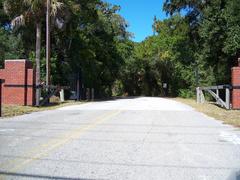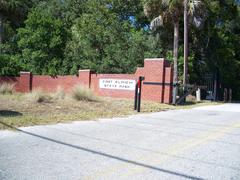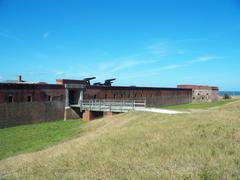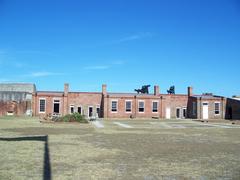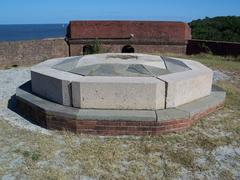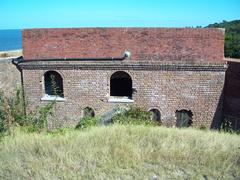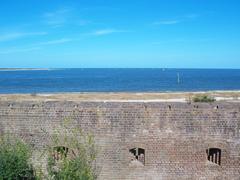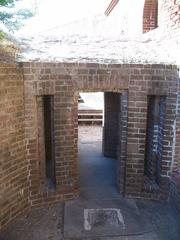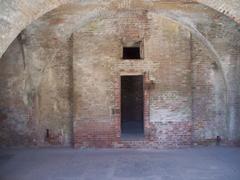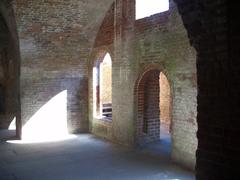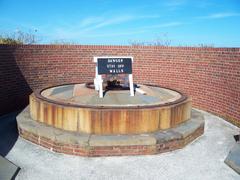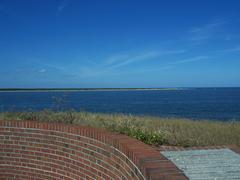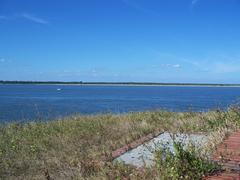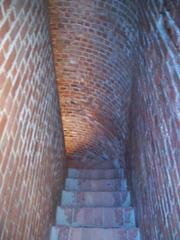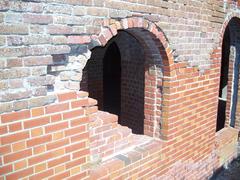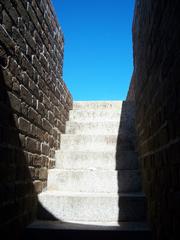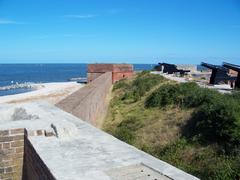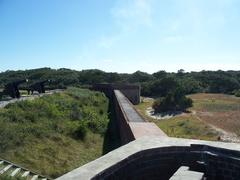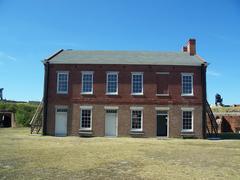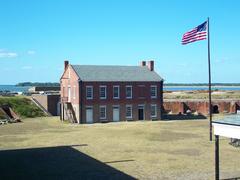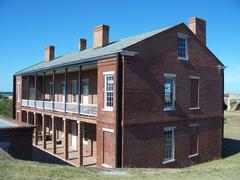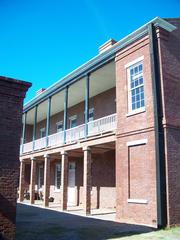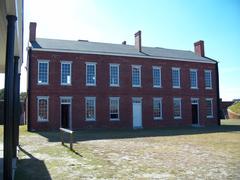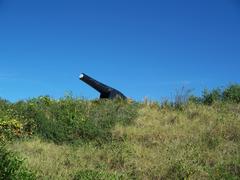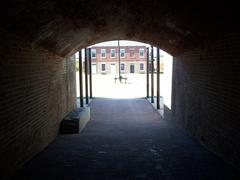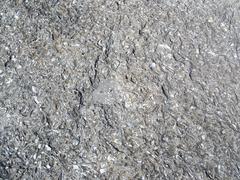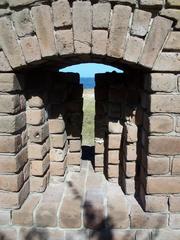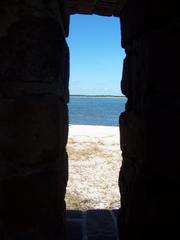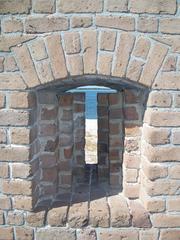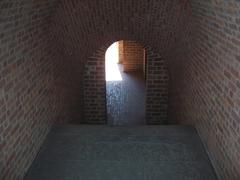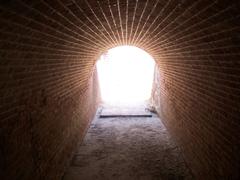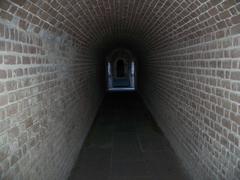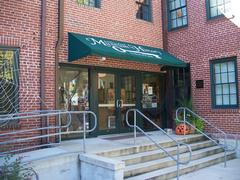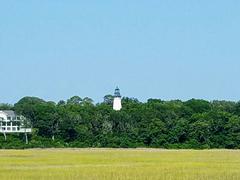
Fort Clinch State Park Visiting Guide: Hours, Tickets, and History
Date: 18/07/2024
Introduction
Nestled on the picturesque Amelia Island in Fernandina Beach, Florida, Fort Clinch State Park is a destination that offers a unique blend of historical intrigue and natural beauty. With its origins dating back to the mid-19th century, Fort Clinch stands as a testament to a bygone era of military strategy and coastal defense. Initially constructed as part of the Third System of coastal defenses after the War of 1812, the fort was named after General Duncan Lamont Clinch, a notable figure in the Seminole Wars (Visiting Fort Clinch - History, Tickets, and Tips).
The park provides a journey through time, showcasing its role during the Civil War, when it was seized by Confederate forces and later occupied by the Union Army. Despite its strategic importance, the fort saw little direct combat but served as a logistical hub for Union operations in the region. Following the war, Fort Clinch’s significance dwindled, leading to its gradual decline until it was revitalized in the 1930s by the Civilian Conservation Corps (CCC) and designated as a state park in 1935 (Complete Guide to Visiting Fort Clinch State Park).
Today, visitors can explore this historical gem through living history programs, interpretive exhibits, and a range of recreational activities. From hiking and biking trails to pristine beaches and camping facilities, Fort Clinch State Park offers something for everyone, making it a must-visit destination for history enthusiasts and nature lovers alike. This comprehensive guide aims to provide essential visitor information, historical insights, and tips to ensure a memorable visit to Fort Clinch State Park.
Table of Contents
- Introduction
- History of Fort Clinch State Park
- Preservation and State Park Designation
- Modern-Day Significance
- Visitor Information
- Nearby Attractions and Accessibility
- Archaeological Discoveries
- Educational and Cultural Impact
- Preservation Efforts
- FAQ Section
- Conclusion
History of Fort Clinch State Park
Early History and Construction
Fort Clinch, located on Amelia Island in Fernandina Beach, Florida, is a historic site with roots tracing back to the mid-19th century. The fort’s construction began in 1847 as part of the Third System of coastal defenses initiated by the United States after the War of 1812. Named after General Duncan Lamont Clinch, a prominent figure in the Seminole Wars, the fort was designed to protect the strategic entrance to the St. Marys River and Cumberland Sound.
The fort’s construction was a massive undertaking, involving the labor of both skilled engineers and enslaved African Americans. The design followed the traditional bastion system, featuring thick brick walls, a moat, and a series of casemates. Despite its strategic importance, the fort was never fully completed. By 1860, only two-thirds of the structure was finished, and the onset of the Civil War halted further construction.
Civil War Significance
During the Civil War, Fort Clinch played a pivotal role. In 1861, Confederate forces seized the fort, recognizing its strategic value. However, the Confederates abandoned it in early 1862 as Union forces advanced. The Union Army then occupied Fort Clinch, using it as a base for operations in the region. The fort’s location allowed Union forces to control access to the St. Marys River and disrupt Confederate supply lines.
The Union occupation of Fort Clinch was part of a broader strategy to blockade Southern ports and cut off supplies to the Confederacy. The fort’s garrison included members of the 1st New York Volunteer Engineers, who made significant improvements to the fort’s defenses. Despite its strategic importance, Fort Clinch saw little direct combat during the war. Instead, it served as a logistical hub and a base for Union raids into Confederate territory.
Post-Civil War and Decline
After the Civil War, Fort Clinch’s military significance waned. The fort was briefly reactivated during the Spanish-American War in 1898, but it saw no action. By the early 20th century, the fort had fallen into disrepair, and its once-formidable walls were crumbling. The U.S. Army officially abandoned Fort Clinch in 1926, and the site was left to the elements.
Preservation and State Park Designation
The story of Fort Clinch might have ended in obscurity if not for the efforts of preservationists and the Civilian Conservation Corps (CCC). In 1935, the State of Florida acquired the fort and surrounding land, designating it as a state park. The CCC, a New Deal program aimed at providing jobs during the Great Depression, played a crucial role in restoring Fort Clinch. Workers rebuilt the fort’s walls, cleared overgrown vegetation, and constructed park facilities.
Fort Clinch State Park officially opened to the public in 1938. The park’s establishment marked a new chapter in the fort’s history, transforming it from a neglected ruin into a cherished historical site. Today, Fort Clinch State Park encompasses over 1,400 acres and offers visitors a glimpse into the past through its well-preserved fortifications and interpretive programs.
Modern-Day Significance
Fort Clinch State Park is not only a historical site but also a vibrant recreational area. The park’s historical significance is highlighted through living history programs, where reenactors portray soldiers from different periods, including the Civil War and World War II. These programs provide visitors with an immersive experience, allowing them to witness daily life at the fort and understand its strategic importance.
In addition to its historical attractions, Fort Clinch State Park offers a range of recreational activities. Visitors can explore miles of hiking and biking trails, enjoy picnicking and camping, and take advantage of the park’s pristine beaches. The park’s diverse ecosystems, including maritime forests, salt marshes, and coastal dunes, provide opportunities for wildlife viewing and birdwatching.
Visitor Information
Fort Clinch Visiting Hours and Tickets
Fort Clinch State Park is open daily from 8 a.m. to sunset. The fort itself is open from 9 a.m. to 5 p.m. Admission to the park is $6 per vehicle (2-8 people), $4 for single-occupant vehicles, and $2 for pedestrians, bicyclists, and extra passengers. Entry to the fort is an additional $2.50 per person. Visitors can purchase tickets at the park entrance or online through the official website.
Tips for Visitors
- Plan Your Visit - Arrive early to make the most of your day. The park offers a variety of activities, so plan your visit to include both historical tours and recreational pursuits.
- Dress Comfortably - Wear comfortable clothing and footwear suitable for walking and exploring the fort and park trails.
- Stay Hydrated - Bring water, especially during the hot summer months, to stay hydrated while exploring the park.
- Check Special Events - Look for special events such as reenactments and historical demonstrations to enhance your visit.
- Respect Wildlife - Observe wildlife from a distance and do not feed or disturb animals.
Nearby Attractions and Accessibility
Fort Clinch State Park is conveniently located near several other attractions in Fernandina Beach and Amelia Island. Visitors can explore the historic downtown area of Fernandina Beach, which offers charming shops, restaurants, and museums. The nearby Amelia Island Lighthouse and the Amelia Island Museum of History are also worth a visit.
The park is accessible by car, with ample parking available. It is also bicycle-friendly, with bike racks provided at key locations. The fort and visitor center are wheelchair accessible, and accessible restrooms are available throughout the park.
Archaeological Discoveries
Archaeological research at Fort Clinch has uncovered valuable insights into the fort’s history and the lives of those who lived and worked there. Excavations have revealed artifacts such as military buttons, ammunition, and personal items, shedding light on the daily experiences of soldiers stationed at the fort. These discoveries have contributed to a deeper understanding of the fort’s role in American history and its impact on the local community.
Educational and Cultural Impact
Fort Clinch State Park serves as an educational resource, offering programs and exhibits that highlight the fort’s historical and cultural significance. The park’s visitor center features displays on the fort’s construction, military history, and the natural environment of Amelia Island. Educational programs for school groups and guided tours provide in-depth information about the fort’s history and its role in shaping the region.
The park also hosts special events throughout the year, including reenactments, historical demonstrations, and cultural festivals. These events attract visitors from across the country and contribute to the local economy by promoting tourism and raising awareness of the area’s rich heritage.
Preservation Efforts
Ongoing preservation efforts ensure that Fort Clinch remains a well-maintained and accessible historical site. The Florida Park Service, in collaboration with local organizations and volunteers, works to preserve the fort’s structures and landscapes. These efforts include regular maintenance, restoration projects, and initiatives to protect the park’s natural resources.
Fort Clinch State Park’s designation as a National Historic Landmark in 1972 underscores its importance as a site of national significance. This designation recognizes the fort’s historical value and ensures that it will be preserved for future generations to explore and appreciate.
FAQ Section
Q: What are the visiting hours for Fort Clinch State Park?
A: The park is open daily from 8 a.m. to sunset, and the fort is open from 9 a.m. to 5 p.m.
Q: How much are the tickets to visit Fort Clinch?
A: Park admission is $6 per vehicle (2-8 people), $4 for single-occupant vehicles, and $2 for pedestrians, bicyclists, and extra passengers. Fort entry is an additional $2.50 per person.
Q: Are there any special events at Fort Clinch State Park?
A: Yes, the park hosts reenactments, historical demonstrations, and cultural festivals throughout the year. Check the park’s official website for event schedules.
Q: Is Fort Clinch State Park accessible for visitors with disabilities?
A: Yes, the park is accessible by car and bicycle, with wheelchair access to the fort, visitor center, and accessible restrooms available.
Conclusion
Fort Clinch State Park stands as a testament to the rich history and cultural heritage of Fernandina Beach and Amelia Island. From its origins as a coastal defense fortification to its role in the Civil War and its transformation into a state park, Fort Clinch offers visitors a unique opportunity to connect with the past. Through ongoing preservation efforts and educational programs, the park continues to honor its historical legacy while providing a vibrant and engaging experience for all who visit. Plan your visit today and explore the fascinating history and natural beauty of Fort Clinch State Park.
References
- Visiting Fort Clinch - History, Tickets, and Tips for Fernandina Beach’s Historic Gem, 2024, https://www.floridastateparks.org/parks-and-trails/fort-clinch-state-park
- Complete Guide to Visiting Fort Clinch State Park - Hours, Tickets, and Tips, 2024, https://www.floridastateparks.org/parks-and-trails/fort-clinch-state-park
- Discover Fort Clinch State Park - History, Activities, and Visitor Information, 2024, https://www.floridastateparks.org/parks-and-trails/fort-clinch-state-park


